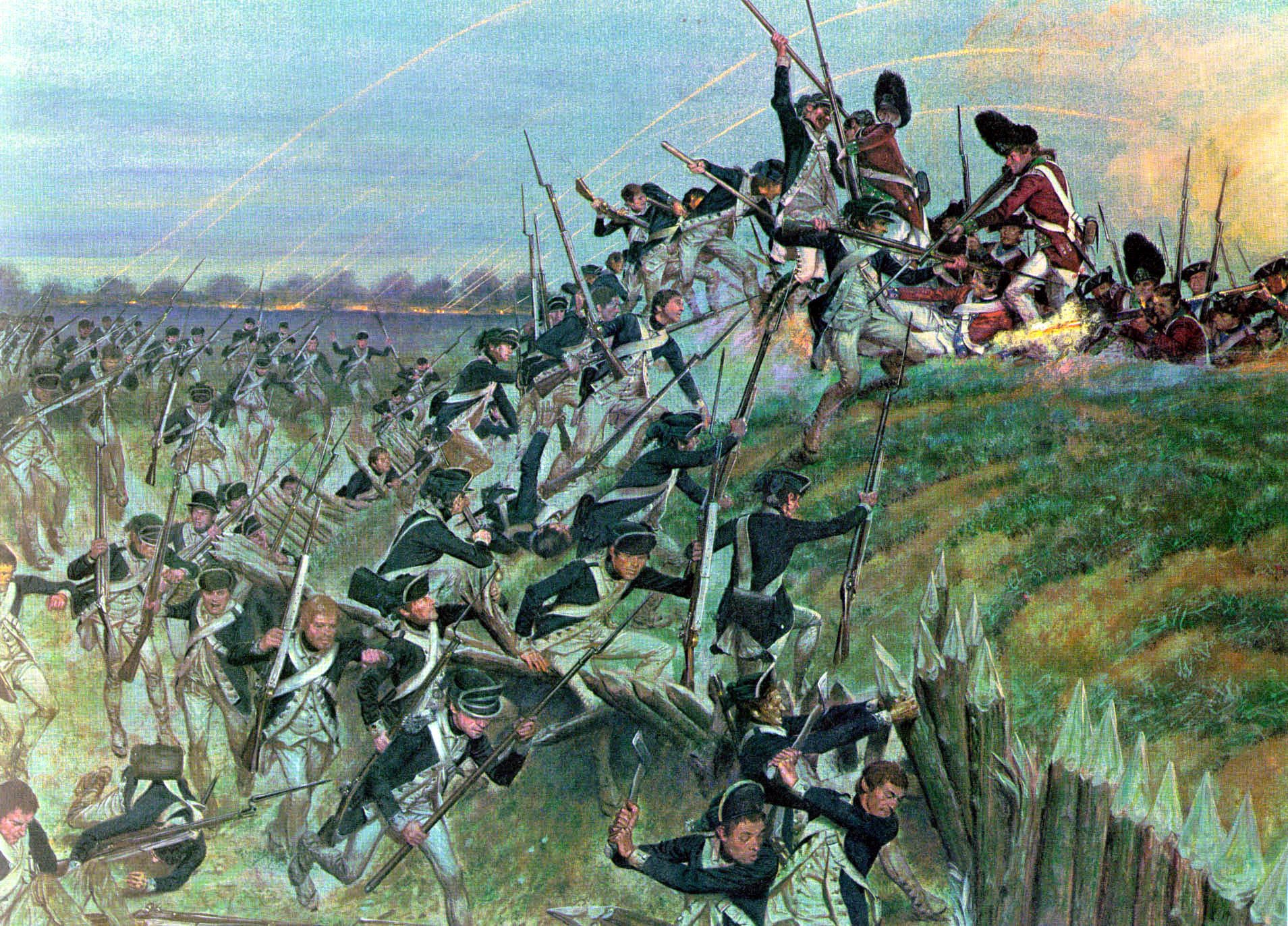Battle of Yorktown [U.S. Revolution]
In the fall of 1781, the American Revolution had been going on for six long and arduous years. The British, who were simultaneously battling the French and Spanish, had failed to capture anything more than a few ports on the eastern seaboard. The Americans were equally exhausted due to economic concerns, food shortages, and low troop morale. General George Washington and his French ally, Comte de Rochambeau, decided they needed a decisive victory and so focused on the British garrison in Yorktown, Virginia. There, Washington could count on a combined sea and land siege with the help of French ships commanded by Admiral Comte de Grasse. There were 9,000 British troops in Yorktown, while Washington had an army of 8,000, but he was able to add militia soldiers, French troops, and Continental troops during his march south so that his total number when he began the siege was more like 19,900. The British Royal Navy attempted to break through the French blockade, but they were unsuccessful.
On September 28th, Washington and Rochambeau arrived with their army and began to dig trenches to facilitate troop and artillery movement. The British used what few artillery they had to try and disrupt the Allied forces, but it proved futile. By October 9th, the Allied forces were in range and began to fire upon the British. The Americans had 14 guns including three 24-pounders, two howitzers, and 6 mortars. They began a steady bombardment of the British position. By October 11th it became apparent to Washington that he would need to take the British fort at Yorktown by force, as the British were able to withstand the heavy cannon fire. On October 14th, a diversionary attack from the Allied soldiers gave the impression that they were going to storm the town of Yorktown. Under the cover of darkness, Lt. Col. Alexander Hamilton’s force attacked the British with bayonets affixed and muskets unloaded to keep the assault silent. After fierce fighting and continued assaults, a British officer was seen waving a white flag. He was brought to the Allied camp and secured the British surrender. The Allied army suffers less than 400 casualties, while almost the entire British force is killed, wounded, or captured. Their surrender marks the end of the American Revolution.
News of the British surrender by Lord Cornwallis reached London in November. The British resistance to the revolution had collapsed. The British government officially declared hostilities over and made peace with America at the Treaty of Paris. The assistance in material and then personnel by the French during the American Revolution is incalculable. If it were not for the French blockade which kept the British ships from providing support to the garrison at Yorktown, the war would have surely continued much longer and might not have ended in the rebellion’s victory. Rochambeau provided much needed support to Washington in helping him secure this victory they needed. According to legend the British band played “The World Turned Upside Down” during the surrender. This is certainly a fabrication, but it highlights the importance and significance of this battle. With the recognition of the new nation, the United States of America, the world had surely changed.
Works Cited
“Battle of Yorktown in the American Revolution.” American Battlefield Trust, https://www.battlefields.org/learn/revolutionary-war/battles/yorktown. Accessed 30 November 2022.
“Siege of Yorktown | Summary, Combatants, Casualties, & Facts.” Britannica, https://www.britannica.com/event/Siege-of-Yorktown. Accessed 30 November 2022.
“Yorktown Battlefield Part of Colonial National Historical Park (U.S.” National Park Service, 26 October 2022, https://www.nps.gov/york/index.htm. Accessed 30 November 2022.







